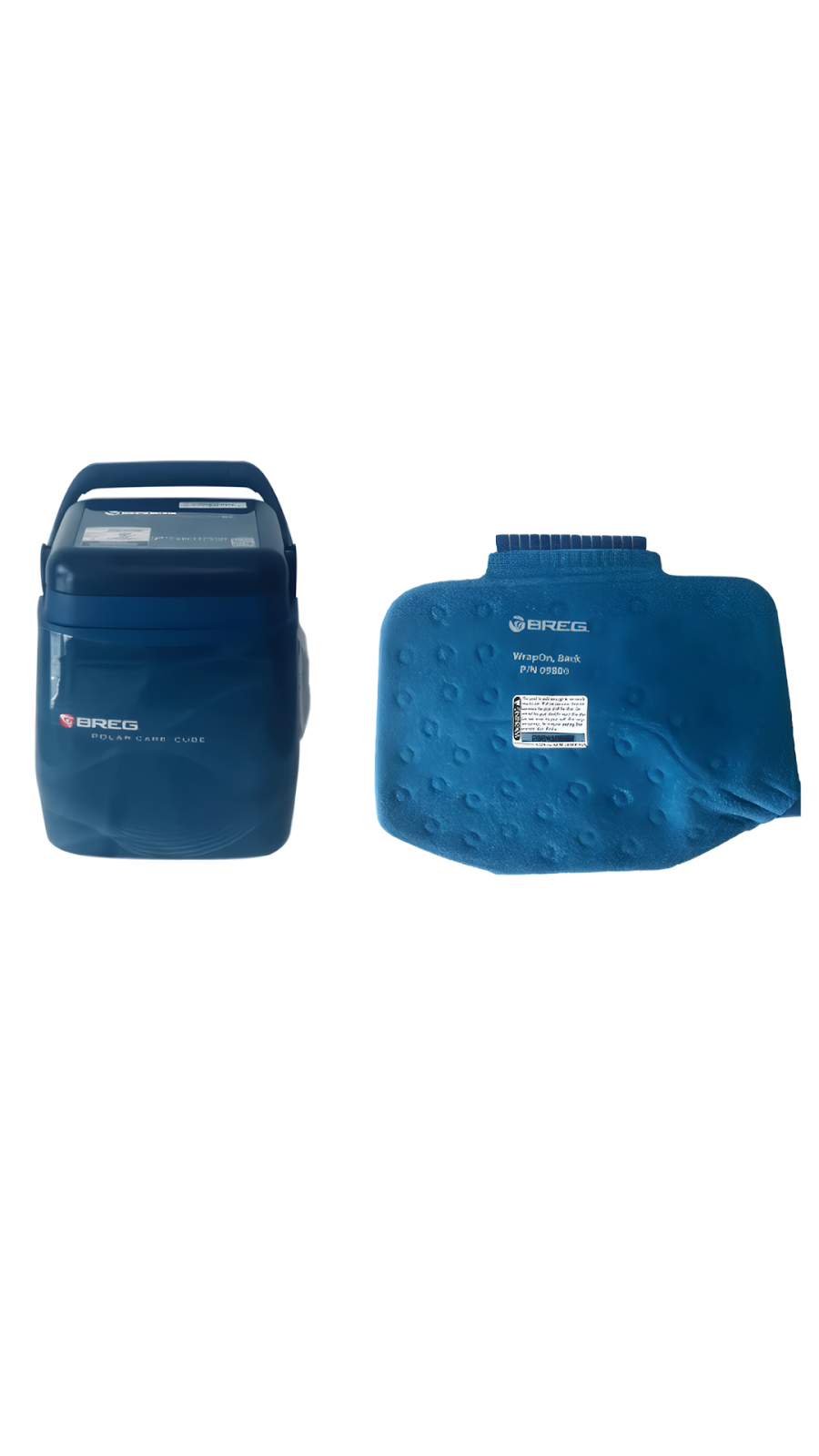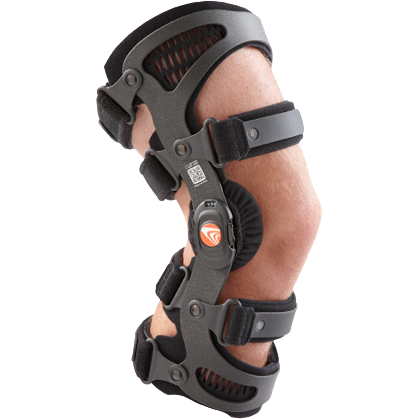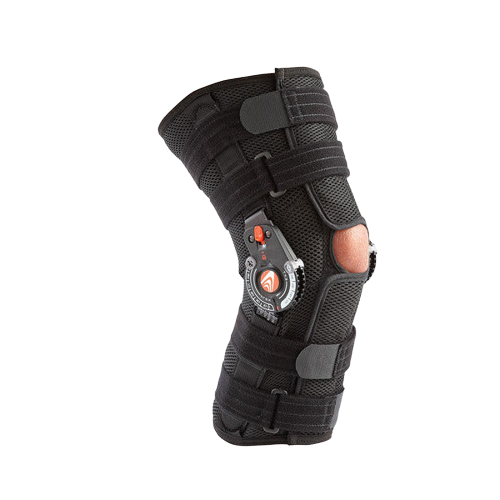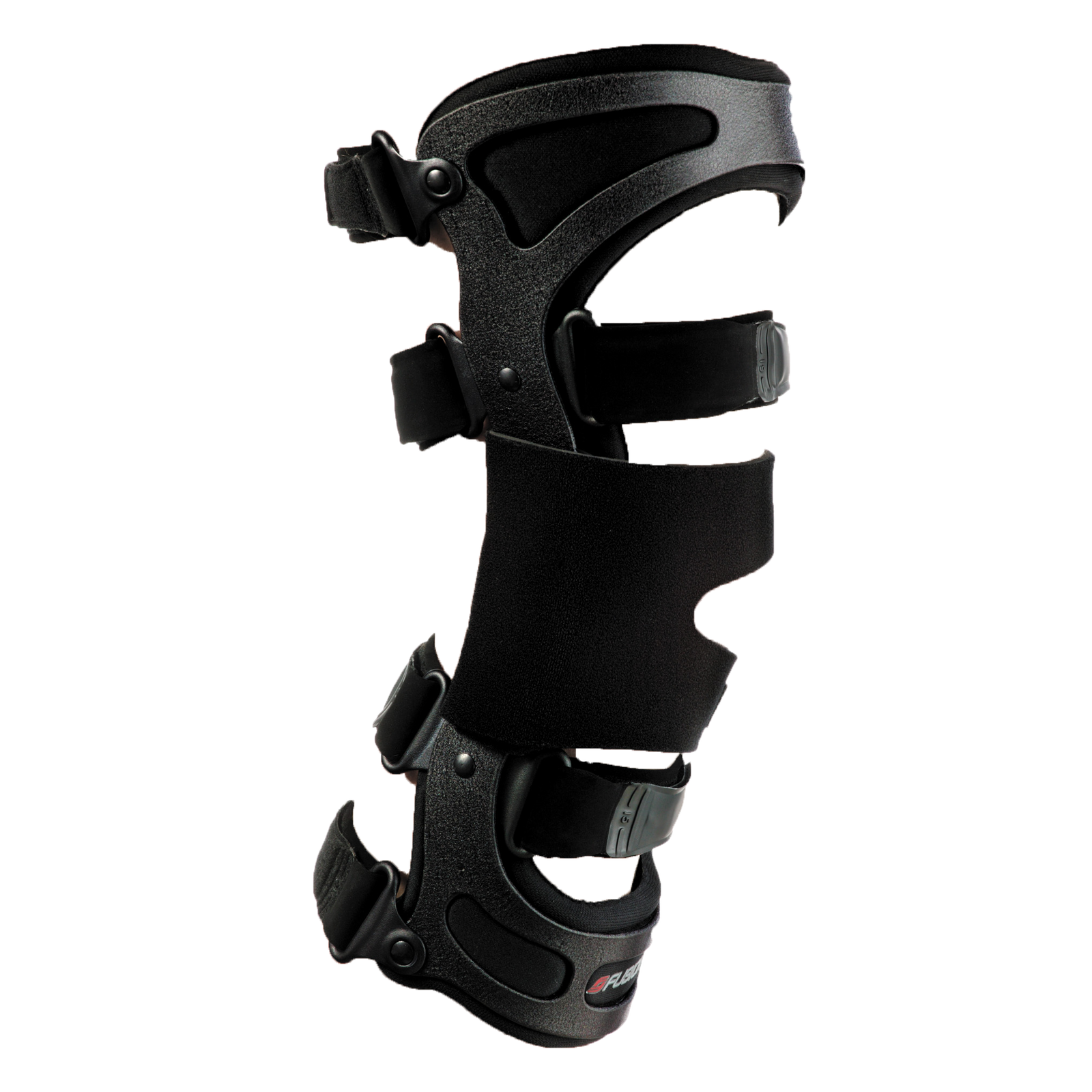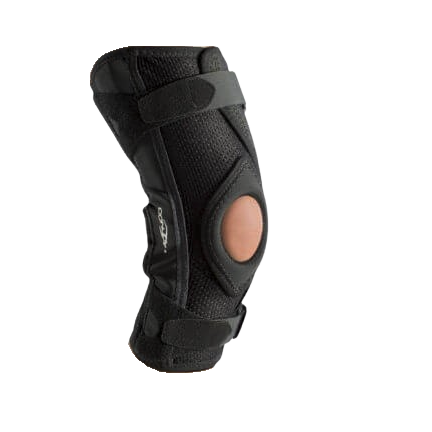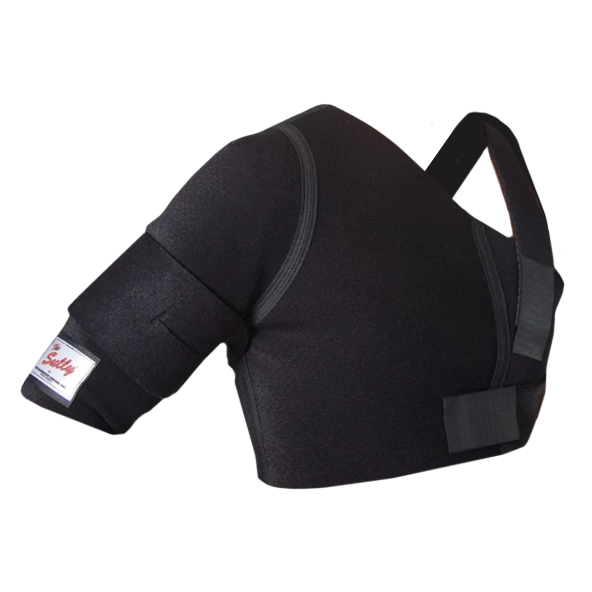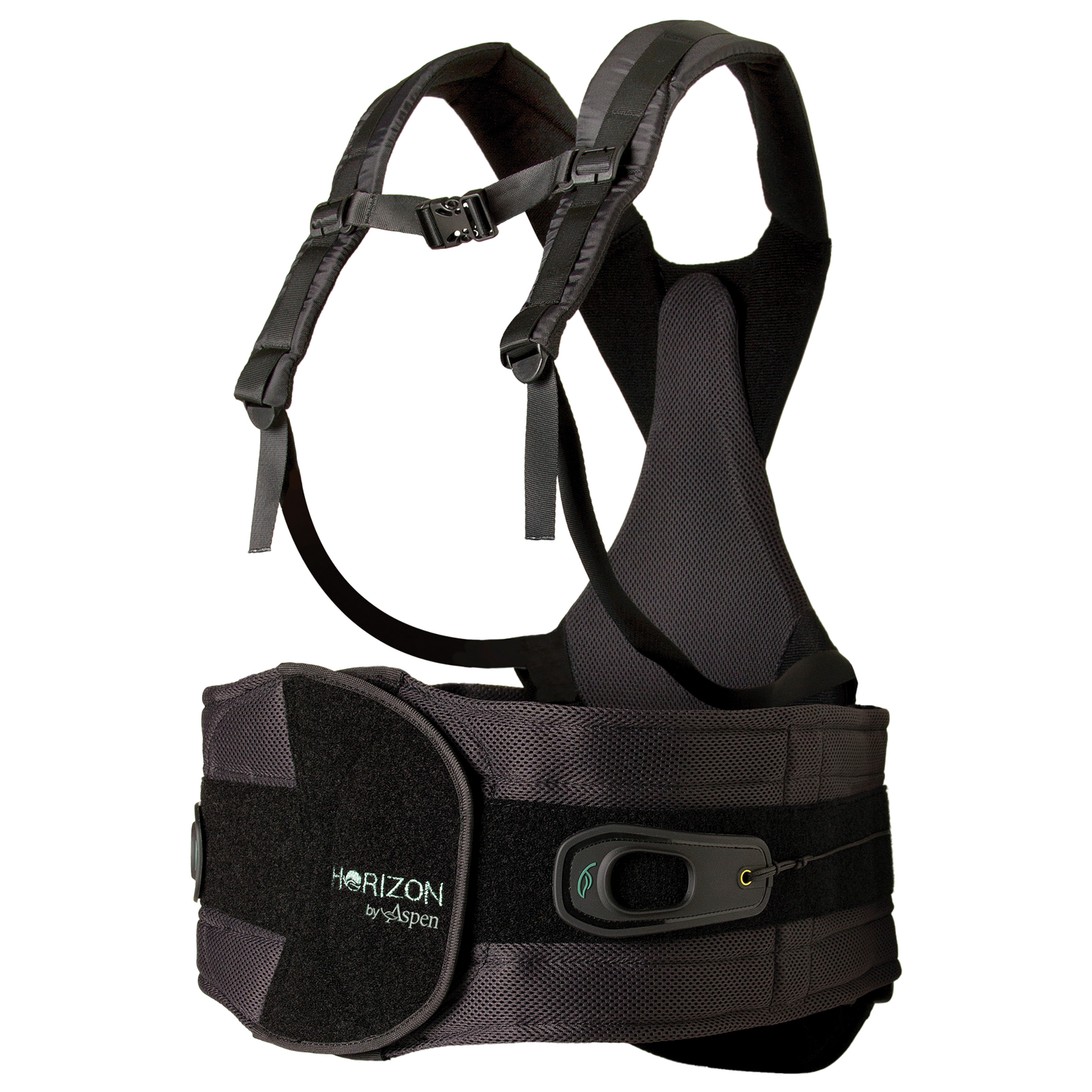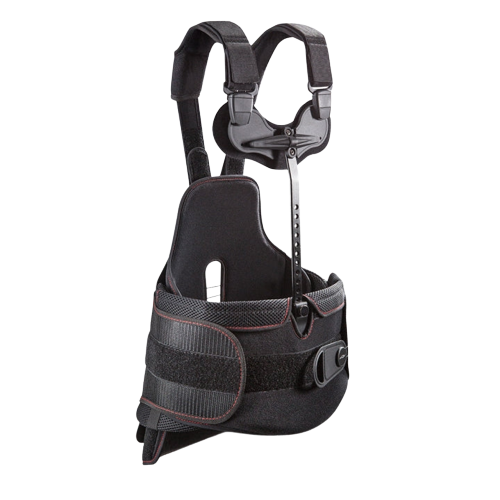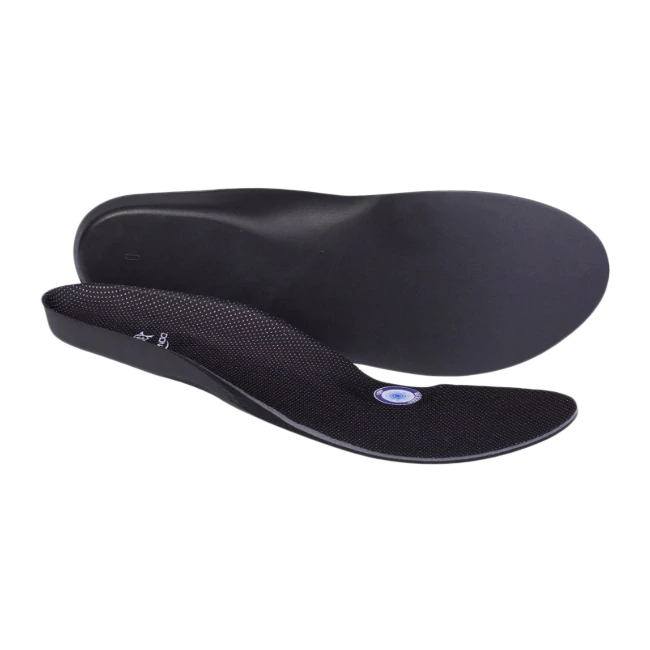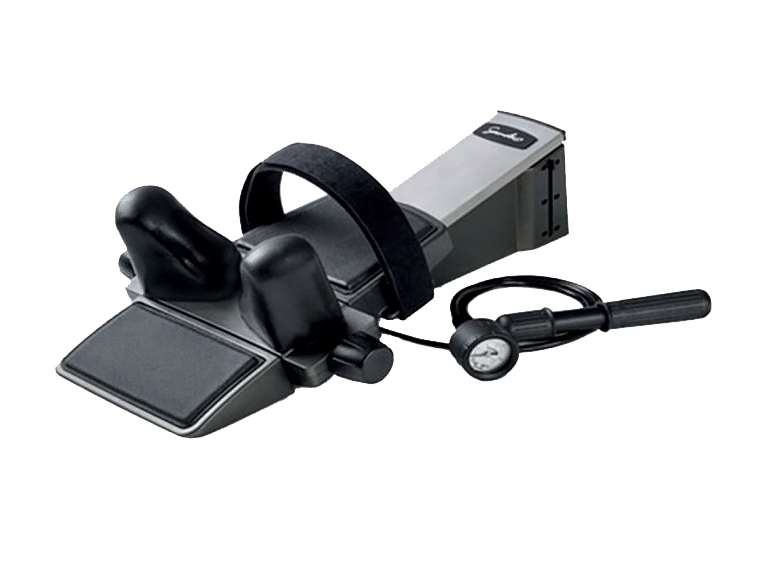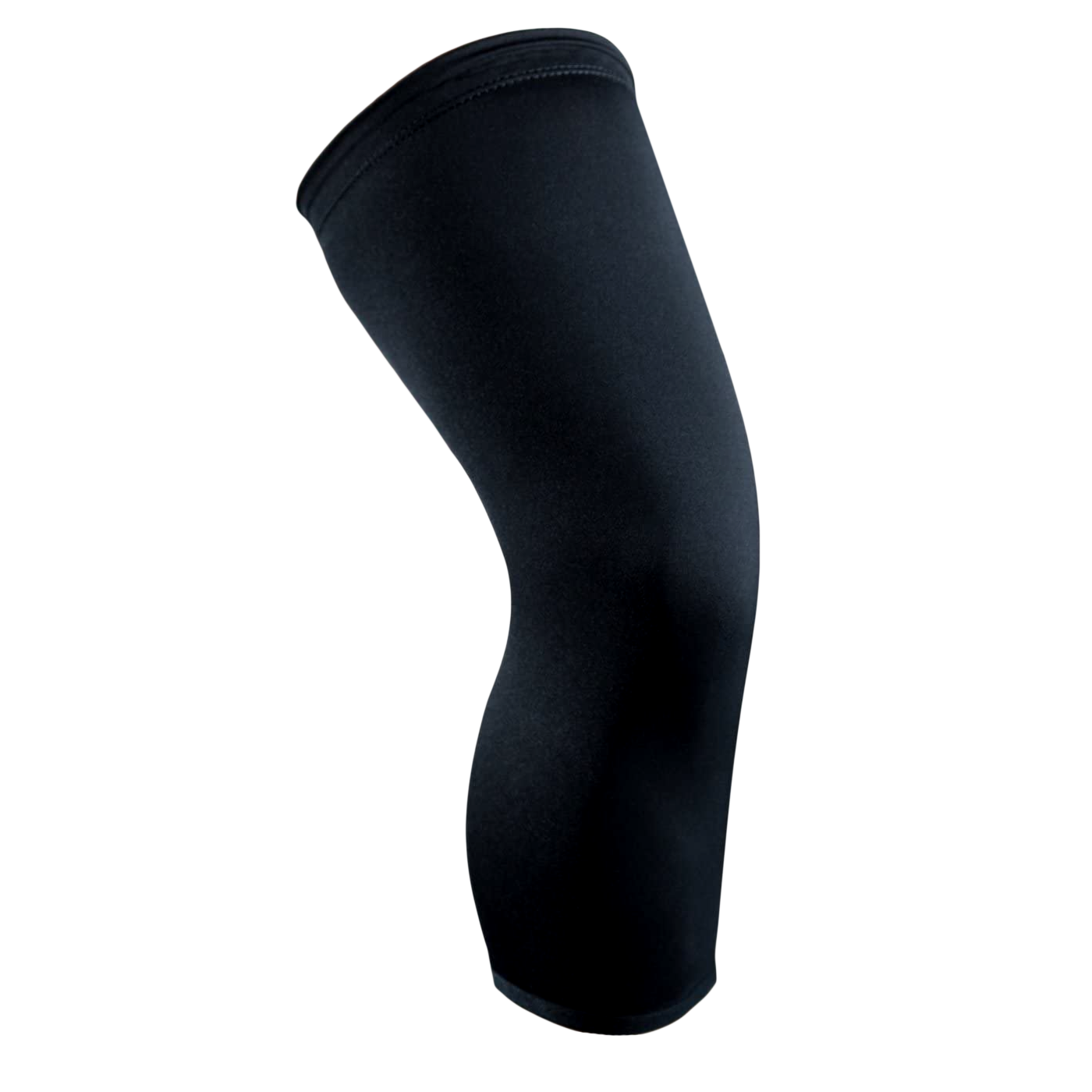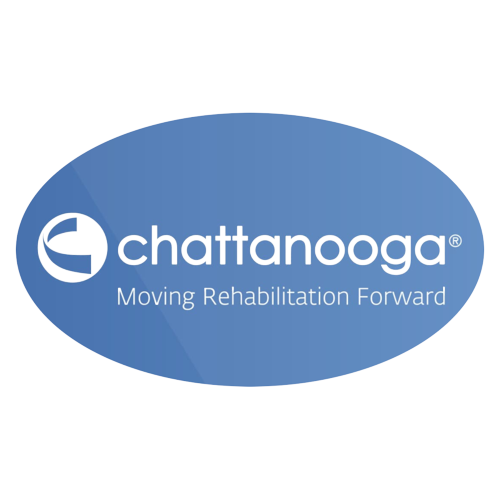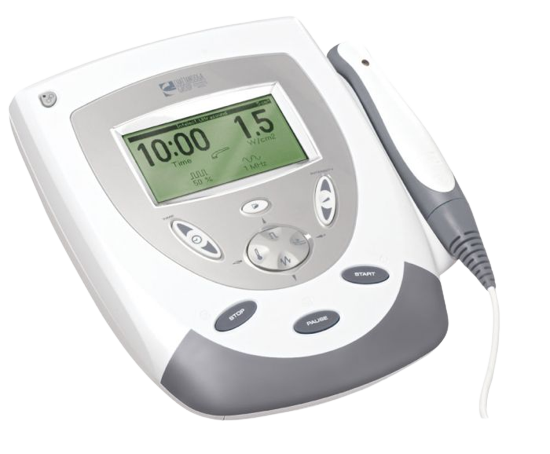
Key Takeaways:
- Understanding Ankle Sprains: Learn about the different types of ankle sprains—such as inversion and eversion—and their symptoms to better tailor your recovery strategy.
- Importance of Rehab Exercises: Incorporate targeted rehab exercises to improve circulation, reduce pain, restore mobility, and strengthen the ankle, which is crucial for effective recovery.
- Prevention Strategies: Focus on strength-building and balance exercises to minimize the risk of future ankle sprains, ensuring long-term joint health and stability.
A sprained ankle can bring your daily routine and favorite activities to a frustrating halt. The pain, swelling, and lack of mobility that follow can make even the simplest movements challenging, leaving you anxious to regain strength and get back on your feet. Whether it happened on the field, at the gym, or just stepping off a curb the wrong way, recovering from a sprained ankle requires patience, persistence, and the right rehab exercises to support healing.
But rehab for a sprain is more than just waiting for the pain to subside—it’s about rebuilding stability, preventing re-injury, and restoring full mobility so you can confidently return to what you love doing. In this article, we’ll guide you through effective exercises and essential recovery tips designed to accelerate healing and help you reclaim strength in your ankle. With the right approach, your road to recovery can be smoother and set you up for a stronger, more resilient foundation.
Understanding Ankle Sprains: What Happens And How To Recover
Ankle sprains are common injuries during various activities, from sports to everyday movements. Understanding what happens during an ankle sprain and how to recover effectively can significantly impact your healing process. This guide will break down the mechanics of an ankle sprain and provide recovery tips, including essential rehab exercises.
What Happens During an Ankle Sprain?
An ankle sprain occurs when the ligaments that support the ankle stretch beyond their limits or tear. This injury typically involves the following:
- Inversion Sprain: The most common type, where the foot rolls inward, causing damage to the ligaments on the outer side of the ankle.
- Eversion Sprain: Less common, occurring when the foot rolls outward, affecting the ligaments on the inner side.
- High Ankle Sprain: Involves injury to the ligaments that connect the two bones of the lower leg (the tibia and fibula) and typically results from a twisting injury.
Symptoms of Ankle Sprains:
- Pain: Often immediate and can vary in intensity based on the severity of the sprain.
- Swelling: Swelling around the ankle joint is common, often accompanied by bruising.
- Limited Range of Motion: Difficulty moving the ankle or putting weight on the affected foot.
- Instability: A feeling of weakness or instability in the ankle joint.
Why Rehab Exercises are Crucial
Rehab exercises are designed to rebuild the ankle's strength and flexibility gradually. These exercises help in:
- Improving Circulation: Enhanced blood flow to the ankle promotes healing.
- Reducing Swelling and Pain: Targeted exercises help manage inflammation and discomfort.
- Restoring Range of Motion: Flexibility exercises aid in regaining the ankle's full movement.
- Rebuilding Strength: Strengthening exercises focus on the muscles around the ankle, reducing the risk of future injuries.
Incorporating rehab exercises into your recovery plan is a proactive step toward a full recovery. It’s important to begin these exercises under healthcare professionals' guidance to ensure they are done safely and effectively.
Duration of Rehab Exercises
The length of time you'll need to commit to rehab exercises varies based on the severity of the sprain and your recovery progress. Patience and consistency are key, as rushing through recovery can lead to setbacks. Adjusting the duration and intensity of the exercises based on your body's response is essential.
Top Rehab Exercises To Strengthen Your Ankle After A Sprain
Below are top rehab exercises for a sprained ankle, specifically crafted to support your recovery journey. It's crucial to start these exercises only when your healthcare provider gives you the green light, ensuring your injury has healed enough to begin gentle movement.
Towel Stretch
Sit with your leg stretched out in front of you and loop a towel around the foot of your injured ankle. Gently pull on the towel, bringing your toes towards you while keeping your knee straight. Hold this position for 15 to 30 seconds before releasing. Repeat 2 to 4 times. This exercise is excellent for improving the flexibility of your ankle.
Alphabet Writing
Sit in a chair and lift your injured foot slightly off the ground. Use your big toe to 'write' the alphabet in the air, moving only your ankle. This exercise promotes a range of motion and ankle strength. Complete the alphabet once or twice, depending on your comfort level.
Ankle Circles
While seated, lift your affected leg and rotate your foot in a circular motion, making sure the movement comes from the ankle and not the leg. Perform 10 circles in one direction, then switch and perform 10 in the opposite direction. This exercise aids in enhancing your ankle's flexibility and range of movement.
Heel and Toe Raise
Stand behind a chair and use it for support. Slowly lift your heels off the ground, rising onto your toes, then slowly lower them back down. After this, lift your toes off the ground, so you are on your heels. Perform 10 repetitions of each. This exercise helps strengthen the muscles in your lower leg's front and back parts.
Resistance Band Exercises
Anchor a resistance band around a stable piece of furniture or your foot, and sit on the floor with your leg stretched out before you. Place the band around the forefoot of your injured ankle. Slowly flex your foot against the band's resistance and return to the starting position. Perform 10 repetitions in each direction: inward, outward, upward (dorsiflexion), and downward (plantarflexion). These movements help to strengthen the muscles around your ankle in all directions, leading to better stability.
Reducing Swelling And Pain: Essential Tips For Ankle Recovery
Recovering from an ankle sprain requires time and a proactive approach to reducing pain and swelling. These essential steps, backed by the highest quality brands in orthopedic surgery recovery and pain relief, can help accelerate your path to recovery.
Elevate Your Ankle
Elevation is a simple yet effective way to minimize swelling. Aim to keep your ankle elevated above the level of your heart. You can do this by resting your foot on pillows while lying down. Elevation helps reduce fluid buildup in the injured area, thereby decreasing swelling.
Apply Cold Therapy
Cold therapy plays a crucial role in managing pain and reducing inflammation. Consider using cold therapy for short periods throughout the day for optimal results. Remember, monitoring the skin's response to cold therapy and limiting application to prevent skin damage is essential.
Compress with Care
Compression helps control swelling by preventing fluid accumulation around the ankle. An elastic bandage or specialized ankle support can compress without compromising circulation. It’s important to ensure the compression is snug but not too tight, as excessive pressure can hinder recovery.
Gentle Range-of-Motion Exercises
As pain and swelling decrease, gradually introducing gentle range-of-motion exercises can help restore mobility. Start with simple movements, such as rotating the ankle clockwise and counterclockwise, being careful not to push past the point of pain. These exercises help improve flexibility and prepare the ankle for more strenuous rehab exercises for a sprained ankle.
How Long Does It Take To Recover From A Sprained Ankle?
The recovery time from a sprained ankle can vary widely depending on the severity of the injury and the individual's commitment to rehabilitation efforts. Generally, there are three grades of ankle sprains, each with its typical healing timeline.
- Grade I (Mild): This level involves slight stretching and microscopic tearing of the ligament fibers. Recovery from a Grade I sprain can take 1 to 3 weeks. During this time, engaging in light rehab exercises for a sprained ankle can significantly enhance the healing process.
- Grade II (Moderate): This category represents a more severe stretching and partial tearing of the ligament. The recovery period for a Grade II sprain can extend from 3 to 6 weeks. As recommended by a healthcare professional, incorporating rehabilitation exercises is crucial for a full recovery.
- Grade III (Severe): The most severe category, involving a complete tear of the ligament. Recovery may take anywhere from 3 to 6 months, and in some cases, surgery may be required. Post-surgery, or for non-surgical treatment, rehab exercises for a sprained ankle play a pivotal role in regaining strength and flexibility.
Gentle Mobility Exercises To Regain Ankle Flexibility Safely
Recovering from a sprained ankle often involves a careful balance of rest and gentle mobility exercises. These exercises are crucial for regaining flexibility and preventing stiffness in the ankle joint. Here’s a guide to gentle mobility exercises that can help you recover safely while promoting ankle flexibility.
Ankle Circles
Purpose: Improves range of motion and flexibility.
- How to Perform:
- Sit on a chair or the floor with your leg extended in front of you.
- Slowly move your foot in a circular motion, making small circles.
- Perform 10 circles in one direction, then switch and do 10 circles in the opposite direction.
Toe Pointing and Flexing
Purpose: Enhances flexibility in the ankle joint.
- How to Perform:
- Sit or lie down with your leg extended.
- Point your toes away from your body (like a ballet dancer) and hold for a few seconds.
- Flex your toes back towards your body as much as you can and hold for a few seconds.
- Repeat this sequence 10-15 times.
Alphabet Tracing
Purpose: Improves mobility and engages multiple ankle movements.
- How to Perform:
- While seated, lift your foot slightly off the ground.
- Using your big toe, trace the letters of the alphabet in the air.
- Focus on using your ankle to create the letters, and try to make them as large as possible.
- Repeat this for the entire alphabet.
Heel Slides
Purpose: Encourages movement without putting weight on the ankle.
- How to Perform:
- Sit on the floor with your legs extended in front of you.
- Slowly slide your heel towards your buttocks while keeping your foot flat on the ground.
- Slide your heel back to the starting position.
- Repeat this motion 10-15 times for each leg.
Calf Stretches
Purpose: Stretches the calf muscles, which helps improve ankle flexibility.
- How to Perform:
- Stand facing a wall, with your hands pressed against it.
- Place one foot behind the other, keeping the back leg straight and the front leg slightly bent.
- Lean into the wall until you feel a stretch in the calf of the back leg.
- Hold this position for 15-30 seconds and switch legs.
- Repeat 2-3 times for each leg.
Towel Stretch
Purpose: Increases flexibility in the calf and ankle.
- How to Perform:
- Sit on the floor with your legs extended in front of you.
- Take a towel or resistance band and loop it around the ball of your foot on the injured leg.
- Gently pull the towel towards you while keeping your knee straight.
- Hold the stretch for 15-30 seconds, feeling the stretch in your calf and ankle.
- Repeat 2-3 times.
Seated Ankle Pumps
Purpose: Enhances circulation and reduces stiffness.
- How to Perform:
- Sit comfortably in a chair with your feet flat on the floor.
- Lift your heels off the ground while keeping your toes on the floor, then return to the starting position.
- Next, lift your toes while keeping your heels down.
- Perform 10-15 repetitions of each movement.
Strength-Building Exercises For A Faster-Sprained Ankle Recovery
Once the initial inflammation and pain of a sprained ankle have subsided, it's crucial to incorporate strength-building exercises into your rehabilitation routine. These exercises help stabilize the ankle joint, reduce the risk of future injuries, and promote faster recovery. Here are some effective strength-building exercises:
Resistance Band Exercises
- Ankle Inversion and Eversion: Loop a resistance band around your foot and hold the ends. Gently move your ankle inward (inversion) and outward (eversion) against the resistance.
- Ankle Plantarflexion and Dorsiflexion: Loop a resistance band around your foot and hold the ends. Point your toes toward the ceiling (plantarflexion) and then pull your toes towards your shin (dorsiflexion) against the resistance.
Single-Leg Stands
- Basic Single-Leg Stand: Stand on one leg, holding onto a chair or wall for balance. Hold this position for 30 seconds, then switch legs.
- Single-Leg Calf Raise: Stand on one leg and slowly raise your heel off the ground, then lower it back down. Repeat on both sides.
Step-Ups
- Box Step-Ups: Step up onto a sturdy box or step, then step back down. Repeat on both sides.
Balance Board Exercises
- Balance Board Tilts: Stand on a balance board and gently shift your weight from side to side and front to back.
- Balance Board Squats: Stand on a balance board and perform squats, focusing on maintaining balance.
Key Tips To Prevent Future Ankle Sprains During Recovery
Recovering from a sprained ankle requires patience and adherence to a structured recovery plan. During this healing phase, it's pivotal to balance rehab exercises for a sprained ankle and protective measures to fortify your ankle against future injuries. Here are crucial strategies to mitigate the risk of re-injury and promote a robust recovery.
Strengthen Your Ankles
- Ankle Exercises: Incorporate exercises like calf raises, toe raises, and ankle circles into your daily routine.
- Resistance Band Exercises: Use a resistance band to add resistance to ankle exercises, increasing strength and stability.
- Balance Exercises: Practice balancing on one leg, or use a balance board to improve balance and coordination.
Proper Footwear
- Supportive Footwear: Wear shoes that provide adequate support and cushioning, especially for activities that put stress on your ankles.
- Replace Worn-Out Shoes: Replace your shoes regularly to ensure optimal support and prevent injuries.
Warm-Up and Cool-Down
- Warm-Up: Before any physical activity, warm up with light cardio and stretching exercises to prepare your muscles and joints.
- Cool-Down: After activity, cool down with gentle stretching to reduce muscle soreness and prevent stiffness.
Be Mindful of Your Surroundings
- Watch Your Step: Pay attention to your surroundings, especially on uneven surfaces or in crowded areas.
- Avoid Risky Activities: If you're recovering from an injury, avoid activities that put excessive stress on your ankles.
Consider Protective Gear
- Ankle Braces: Wearing an ankle brace can provide additional support and stability, especially during physical activity.
- Taping: Taping your ankle can help stabilize the joint and reduce the risk of re-injury.
Common Mistakes To Avoid In Ankle Sprain Rehabilitation
When recovering from a sprained ankle, regaining strength and flexibility involves a careful balance of rest, rehabilitation exercises, and the incorporation of pain relief and recovery techniques. However, several common mistakes can hinder a successful recovery. Awareness of these pitfalls can help ensure a smoother and more effective rehabilitation process.
- Rushing the Recovery Process: One of the most frequent errors is attempting to return to normal activities or sports too quickly. Healing takes time, and pushing your ankle too soon can lead to further injury and setbacks. Rehabilitation exercises for a sprained ankle should be gradually intensified, ensuring the ankle is ready to bear the increased load.
- Neglecting Professional Advice: Skipping or ignoring healthcare professionals' guidance can significantly impact your recovery. It is crucial to follow the rehab plan and exercises given by your physiotherapist or orthopedic specialist. They can tailor the rehabilitation to your injury’s severity, ensuring the exercises are safe and effective.
- Improper Use of Recovery Aids: High-quality recovery aids can substantially aid rehabilitation. It’s important to use them as recommended. For instance, when using cold therapy to manage pain and inflammation, monitoring the application time carefully is vital to maximize benefits without causing skin damage or other issues.
- Overlooking the Importance of Strengthening and Flexibility Exercises: Limiting your rehab just to rest and ice can significantly delay your recovery. Incorporating stretching and strengthening exercises into your regime is essential for restoring the ankle's function and preventing future injuries. These exercises help to improve blood flow, reduce stiffness, and increase the strength of the muscles supporting the ankle.
- Skipping Gradual Weight Bearing Exercises: Gradually reintroducing weight-bearing activities is vital in ankle rehabilitation. Starting with light exercises and slowly increasing the load helps the ankle recover its capacity to support your body weight and movements. Ignoring this gradual process can result in inadequate healing and increased vulnerability to re-injury.
Final Thoughts
Rehabilitation exercises for a sprained ankle play a critical role in the journey toward recovery, ensuring that individuals can return to their daily activities with confidence and strength. The journey to recovery is unique for each person, but integrating these exercises with the guidance of a professional can significantly enhance the healing process. Remember, patience and consistency are key. It is equally important to incorporate quality recovery tools into your regimen.
At OrthoBracing, we understand the challenges faced during the recovery journey from orthopedic surgery or sprains. This is why we are committed to offering only the highest-quality brands, such as AirCast, Breg, Chattanooga, DonJoy, and Exos, designed for optimal recovery and pain relief. Our selection of products is carefully curated to support your rehab exercises, aiding in faster, more comfortable healing.
Empower your recovery with the right resources and equipment. Allow ample time for your body to heal, and don’t rush through the recovery stages. Your resilience, combined with our expertly chosen recovery aids, paves the way for a return to full health and mobility. Trust in the quality and efficacy of our products, and remember, we're here to support you every step on your path to recovery.
Read also:
- Ankle Rehab Exercises: Regain Strength And Mobility
- How To Use An Ice Machine For Knee: Step-By-Step Guide
- What Is Cold Compression Therapy? Benefits For Recovery
Frequently Asked Questions About Rehab Exercises For A Sprained Ankle
Is it normal to feel pain while doing rehab exercises for a sprained ankle?
Yes, experiencing mild to moderate discomfort during rehab exercises for a sprained ankle is common. However, it's essential to differentiate between discomfort and pain. Discomfort is a normal part of the healing process, signaling that the muscles and ligaments are being stretched and strengthened. In contrast, sharp or severe pain could indicate that the exercises are being performed incorrectly or that the ankle hasn't sufficiently healed to begin physical therapy.
How many times a day should I perform ankle rehab exercises?
The frequency of performing rehab exercises for a sprained ankle can vary depending on the severity of the sprain and the stage of recovery. Generally, a structured exercise regimen should be followed 2 to 3 times a day. Each session should include exercises tailored to meet the recovery goals, improving flexibility, strength, or balance. It's vital to follow the specific recommendations of a healthcare provider or a physical therapist to ensure the exercises contribute positively to the healing process without causing further injury.
Can rehab exercises prevent future ankle sprains?
Yes, consistently performing rehab exercises for a sprained ankle can significantly reduce the risk of future sprains. These exercises aim to improve flexibility, strengthen the muscles around the ankle, and enhance proprioception (the body's ability to perceive its position in space), improving the ankle's stability. By incorporating a well-rounded exercise routine into one's daily lifestyle even after recovery, individuals can maintain stronger, more resilient ankles and minimize the risk of re-injury.
Are there any exercises I should avoid with a sprained ankle?
Certain exercises should be avoided until the ankle has healed sufficiently to prevent aggravating the injury. High-impact activities such as running, jumping, or any exercise that involves rapid changes in direction are not recommended in the early stages of recovery. Also, exercises that place excessive strain on the ankle, such as heavy weights or resistance training focused on the lower legs, should be cautiously approached. Always consult with a healthcare professional to determine the appropriate time to introduce more challenging exercises safely.
How do I know if I am overdoing my ankle rehab?
Signs that indicate overexertion include increased swelling or bruising, pain levels higher than normal following exercise, decreased range of motion, and any new or unusual symptoms in the ankle. If any of these signs are present, it's crucial to pause the rehabilitation exercises and consult a healthcare professional for guidance.
Should I wear an ankle brace while performing rehab exercises?
Wearing an ankle brace while performing rehab exercises can offer additional support and stability, especially in the early stages of recovery or during exercises that might put strain on the healing ankle. Ankle braces help prevent abnormal ankle movements, reducing the risk of re-injury. However, the type and extent of bracing should be discussed with a healthcare professional, as excessive dependency on braces can inhibit the natural strengthening of the ankle muscles.

